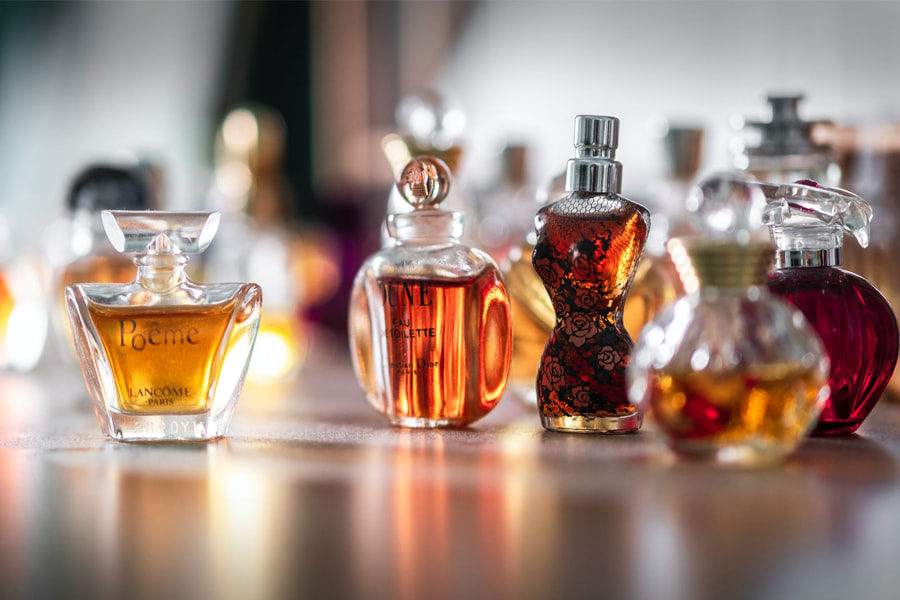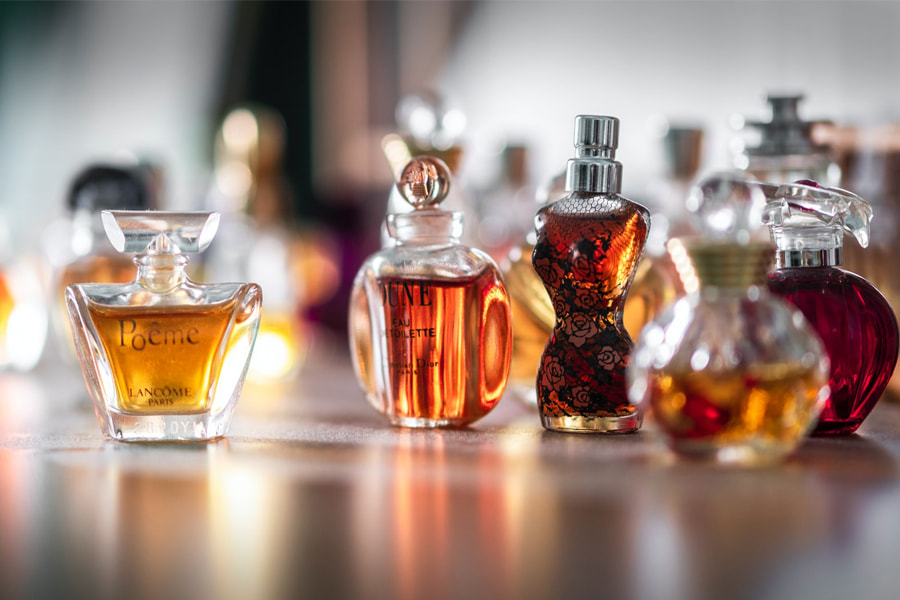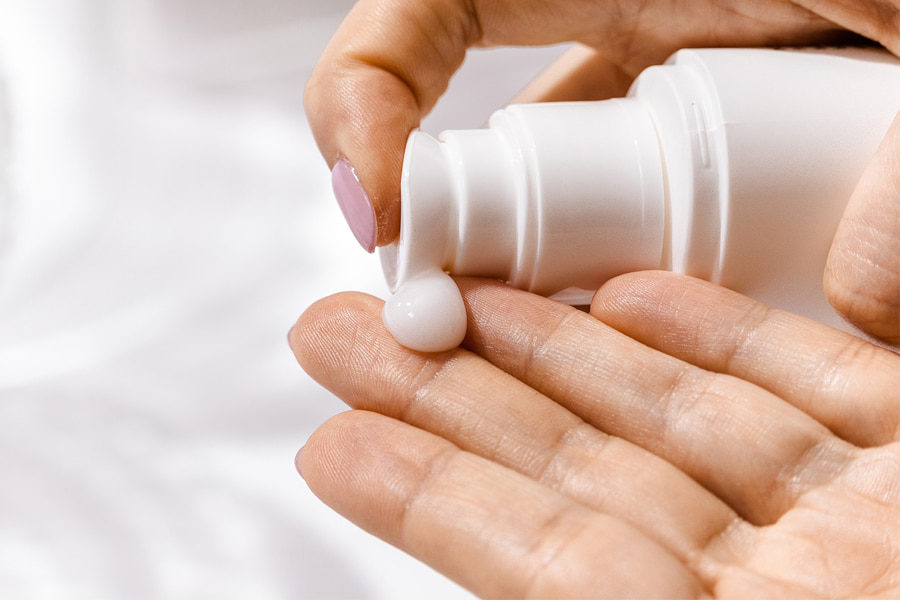
Perfumes were not a popular topic of discussion, some time ago. However, using fragrances has become a part of our daily routine now. Both males and females experience this. Nowadays, fragrances have a significant impact on our lives. At present, your outfit would be incomplete without a suitable scent. However, it is not just the perfume or its fragrance that matters. There is a very long process that takes place during the production of aromas. Therefore, we thought of briefing you about the production of aromas through this article. You will have a pretty good idea about the production of aromas at the end of this article.
Uses of Aromas
Before telling you about the production of aromas, we thought of telling you about the uses of aromas. This would be helpful in understanding how important aromas are for our lives. Sometimes, we may not think this to be an important part of our lives. But in actual fact, this is. Hence, having a look at the uses of aromas would be important.
Aromas are widely in use in industrial processes, particularly in the food sector. They have a significant impact on consumer decisions as food additives. This because fragrance is a key criterion for evaluating food quality and distinguishing food kinds. Many projects are underway to meet the demands of consumers, with the goal of producing food with improved sensory qualities. There are several fragrance generation systems that are based on physicochemical, chemical, and microbiological processes.
Because of human health, the topic of food safety has become highly significant in recent years. That is why biotechnology techniques of scent synthesis are becoming increasingly popular. Bio aromas are aromas produced by biotechnological methods. Microbiological, enzymatic, and tissue culture procedures are also useful in the creation of bio aromas.
Apart from food production, it is perfume production that makes great use of aromas. In this article, our major focus will be on aromas with regard to perfume production. So, go ahead reading. You will get to know a lot in terms of the production of aromas in relation to the perfume industry.
C h a n e l no.5 EDP Spray for Women 3.4 OZ/100 ml
This is a good perfume that you can go for. This spray for women is a perfume that has attracted the attention of women from all over the world. The buyers of this product have positively rated and reviewed this on Amazon. Hence, we think that this perfume is something that is worth going for.
Aromatic Sources
Every perfume brand’s success is entirely dependent on the scent it produces and the ingredients it uses. To generate a pleasant scent, numerous manufacturers utilize diverse chemicals, plants, and even animal parts. Through this article, you will be able to extensively have a look at these aromatic sources too.
Plants have used in perfumery as a source of essential oils and aroma mixtures for a long time. These aromatics are usually secondary metabolites comes from plants to protect them from herbivores, pollution, and to attract pollinators. Plants are by far the most important source of aromatic ingredients in perfumery. The origins of these blends might be found in many parts of a plant. A plant can have many sources of aromatics; for example, the ethereal portions and seeds of coriander have remarkably different scents.
In particular, what specific types of sources are in use for the production of aromas. It is not necessarily just tree parts. There are more. Let us take a look.
- Parts of trees
- Animal-related sources
- Ocean-related sources
- Manufactured sources
Briefly, this is how we can list them out. Excited to know about each of them in detail. We are ready to tell you too.
Nautica Voyage By Nautica For Men Eau De Toilette Spray, 100 ml
This is a scent for men. And this perfume is a combination of apple, cedarwood, musk, amber, water lotus, green leaf, and mimosa notes. Of course, this is a perfume that has an attractive fragrance. Moreover, we are sure that you would like the fragrance this provides.
1. Parts of trees
In a major key, it is generally parts of trees that are in use in the production of aromas. Anyway, when it comes to tree parts, we cannot limit it. There are so many tree parts that we can talk about. Almost all the parts of trees are in use in the production of aromas in different contexts.
Fragrant plants of all kinds are useful as sources for essential oils and aromatic mixes since ancient times. As we told you, continuing the tradition, they are still the main source of aromatic chemicals in perfumery today.
- Bark
- Blossoms and booms
- Organic products
- Leaves and twigs
- Saps
- Roots, rhizomes, and bulbs
- Seeds
- Woods
Basically, these are the parts of trees that are in use in the production of aromas. Now, let us discuss them descriptively.
1. Bark
Cinnamon and cascarilla are two of the barks that are often in use in the perfume industry. Sandalwood, rosewood, agarwood, cedar, birch, pine, and juniper are some additional common bark aromatics. The aromatic oil found in sassafras root bark is also used lawfully or refined for its main ingredient, safrole. It is used in the creation of various fragrant blends.
2. Blossoms and booms
Without a doubt, this is another one of the most important and common sources of fragrance aromatics. Osmanthus, plumeria, mimosa, tuberose, narcissus, scented geranium, cassie, ambrette, and the blossoms of citrus and ylang-ylang trees are all in use. The clove’s unopened blossom buds are also commonly used, despite the fact that they are not commonly considered as flowers. Except for vanilla, an orchid that must be pollinated first and turned into seed cases before being utilized in perfumery, most orchid flowers are not commercially in use to generate basic oils or absolutes.
The omnipresent rose, sometimes known as the “queen of all flowers,” is one of the most significant components of a beautiful perfume. Its use in perfume stretches back to the ancient civilizations of Rome and Greece. Jasmine is another pure essence that gives any scent a decent fragrance. Because of their distinct smells, both the victoria and parma violet types feature in perfumes and remedies for ages.
The fragrant orange blossom connects with weddings across the world for a long time. Neroli, or orange blossom oil is named after the Italian Princess of Neroli, who used this rare aroma to scent her gloves. Hawaiian leis comes from plumeria flowers, which are popular among Polynesians for their color and aroma.
3. Organic products
Extracted fragrance notes from fresh, natural goods such as apples, strawberries, and cherries are common. Blackcurrant leaf, litsea cubeba, vanilla, and juniper berries are all notable exceptions. Citrus, such as oranges, lemons, and limes, are among the most common organic items. Although grapefruit skin is still in use for aromatics, more and more commercial grapefruit aromatics misled deliberately. This is because the ordinary sweet-smelling grapefruit includes sulfur.
4. Leaves and twigs
The ‘green’ scent found in many perfumes comes from the leaves and twigs of various plants. Lavender leaf, patchouli, sage, violets, rosemary, and citrus are some of the most popular.
5. Saps
Gums are useful in incense and perfumes since old ages and are highly valuable. Various civilizations have used deeply fragrant and germ-free saps and sap-containing aromas as prescriptions for a wide range of ailments. Labdanum, frankincense/olibanum, myrrh, Peruvian amber, and benzoin are some of the most common saps in perfumery. Pine and fir gums are particularly well-known sources of terpenes. They are used in the natural blend of a variety of differently designed or naturally occurring aromatic blends. Also the resinous discharge of prehistoric conifers is responsible for some of what is now known as golden and copal in fragrance.
6. Roots, rhizomes, and bulbs
Iris rhizomes (a modified underground plant stem that sends out roots and shoots from its nodes), vetiver roots, and various ginger rhizomes are the three most commonly used components of plants in this category. They are so useful in the production of various elegant fragrances.
7. Seeds
Tonka bean, carrot seed, coriander, caraway, cocoa, nutmeg, mace, cardamom, and anise are some of the most often used seeds. These are most common in the production of aromas.
8. Woods
Wood oils and distillates are essential in perfumery since they provide the base notes to a smell. Sandalwood, rosewood, agarwood, birch, cedar, juniper, and pine are among the most often used woods. These can be used as macerations or as dry-refined (adjusted) constructions.
Versace Bright Crystal By Gianni Versace For Women. Eau De Toilette 0.17 Fl Oz Mini
This is another good perfume that we can recommend to you. This is an intriguing and sensuous scent, expressive, expressing the Versace lady who is powerful and confident in her beauty; sensual and feminine, always elegant. The voluptuousness and transparency of Magnolia, Peonia, and Lotus Flower are provided by vegetal amber. While vegetal amber is delicately sensuous and will thrill the senses.
2. Animal-related sources
Apart from the parts of a tree, there are so many animal-related products that are in use in the production of aromas. This sector is all about that. Nevertheless, let us make a list of the animal-related sources that are common in the perfume industry.
- Musk
- Civet musk
- Ambergris
- Castoreum
- Hyraceum
- Honeycomb
Broadly, these are what we can discuss here. So, let us get into the discussion.
1. Musk
Originally derived from an organ (sac or unit) located between the privates and the umbilicus of the Himalayan male musk deer Moschus moschiferus, it has since mostly been replaced by the use of synthetic musks sometimes referred to as “white musk.” This is widely in use in the perfume industry to manufacture various perfumes.
2. Civet musk
The odorous sacs of African civets provide this fragrant source. Although it was previously quite popular, synthetic musk has led to a reduction in its use.
3. Ambergris
The sperm whale produces and ejected lumps of oxidized greasy aggravate as antecedents. These are what we refer to as ambergris. However, ambergris should not be confused with yellow gold, which is used in jewelry. Because ambergris reaping causes no damage to the species it comes from, it is one of the few fragrance specialties about which there is now minimal controversy.
4. Castoreum
This aroma is generated from the sacs of both North American and European Beavers, two species that release this scent to mark their territory. It is used in perfume base notes to give a leathery “new car” smell.
5. Hyraceum
This aroma is a blend of musk, castoreum, civet, tobacco, and agarwood that comes from the petrified feces of African and Middle Eastern Rock Badgers. This is also quite common in the perfume industry
6. Honeycomb
These are from the bumble bee’s honeycomb. Both beeswax and honey may be extracted and dissolved to make an outright. To make beeswax complete, beeswax is separated with ethanol and then the ethanol is dissipated.
This is pretty much about the production of aromas with the use of animal-related products. However, due to ethical reasons, the popularity of this kind of aroma is going down. In recent times, we see an improvement in the demand for plant-based aromas over animal-related ones.
Kate Spade Eau de Parfum Spray
This perfume is an excellent one for you to use. Those who used this are so happy with its fragrance and longevity. This has also received good reviews on Amazon in general.
3. Ocean-related sources
All the same, there are certain ocean-related sources that are pretty useful in the production of aromas. In certain scents, distillates are used as the base oil. Fucus vesiculosus, more which we commonly refer to as bladderwrack, is an example of ocean growth. Because of their higher cost and lesser intensity than artificial items, characteristic kelp scents are not in use much commonly.
Christian Dior J’adore By Christian Dior for Women 5.0 Oz Eau De Parfum Spray, 5.0 Oz
For your use, we recommend this perfume to you too. For its scent and value for money, this has received good ratings on Amazon. And this has received good reviews as well.
4. Manufactured sources
In this section, we need to focus on the aroma compound. Let us directly get into it.
Aroma compound
Aromatic chemicals are in use to create many wonderful aromas, such as vanilla, cinnamon, and flowery. We can refer to any chemical combination with a scent or odor that is sufficiently volatile to the olfactory system in the upper region of the nose as a fragrance compound. Particles that fulfill this criterion have molecular weights of fewer than 300 and we refer to them as odorant and aromatic chemicals as well.
These chemicals got their names from the odors they gave out. Further, they are a chemically diverse group of compounds that have a flat ring of atoms connected by alternating single and double bonds, or many rings within their structure. One distinguishing feature is resonance, which occurs when the alternating bonds allow the atoms in the ring to exchange electrons.
Many aromatic chemicals are benzene derivatives, which are commonly utilized in perfumery due to their better blending properties. This substance, known as phenoxyethanol, is a key component of rose oils. Its production necessitates the substitution of other groups for hydrogen atoms.
Food, wine, spices, fragrances, aroma oils, and flower smells all include these amalgams. Many are formed as fruits and other crops mature. The majority of byproducts in wine come from the fermentation process. Women’s perfumes contain a greater concentration of aromatic components than men’s scents.
Lancôme La Vie Est Belle L’Eau de Parfum Spray, 3.4 FL OZ
This is also another one of the perfumes that we can recommend to you. The customers of this product have added positive reviews and ratings on Amazon for this product. So, we think that this would be an ideal pick for you in terms of perfumes.
Conclusion
So, this article consisted of information about the production of aromas for the perfume industry. And we hope that you could learn a lot through this article. Further, Best men’s perfumes for a date, best women’s perfumes for the workplace, best perfumes for college girls, date night perfumes for ladies, best prom night perfumes, best colognes for working men, best colognes for college guys, and best perfumes for the wedding day are some of our additional content that you can go through.



